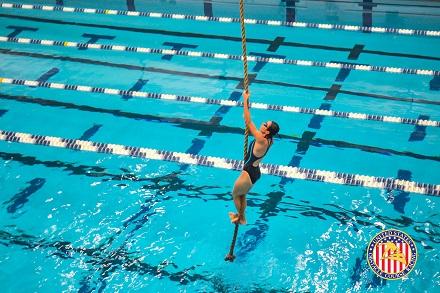
USA Obstacle Course Racing(USAOCR) is the National Governing Body for obstacle sports, disciplines and events in the United States of America. ?It is a member-based nonprofit national federation that exists to represent the needs of the sport through athlete member representation and engagement. Its mission is to promote OCR and its related sports and disciplines throughout the United States, to lead the sport of OCR, and meet the requirements as specified by the United States Olympic Committee and World OCR, the Fédération Internationale de Sports d’Obstacles.
USA OCR’s goals include facilitating safer, fairer races at a lower cost and providing a route for athletes to compete at international and games competitions. This includes event safety, fairness, rankings, operations, medical standards, rule enforcement and comprehensive insurance at affordable rates.
Sports Destination Management: Obstacle course racing has been around for a number of years, but USA OCR is fairly new.
Samantha Wishner: Yes, we’ve been around a little more than two years.
SDM: Does USA OCR sanction races?
Wishner: We are working toward sanctioning. Most of the companies currently putting on races are for-profit entities and they will be working with us to have sanctioning for their championship races.
SDM: So they need to be a part of USA OCR to get sanctioning?
Wishner: Yes.
SDM: What percentage of the industry do you see as part of your membership?
Wishner: We have a pretty small percentage of the market – about 300 individual members – but we’re hoping this is the year we get that big boost.
SDM: How many events has USA OCR put on?
Wishner: We have put on one big event in the USA – it was in Florida last year – but starting next year, we’ll have more. Our national championships will be held on Sunday, December 9.
SDM: What has been your promotion strategy for the championship – and for the organization as a whole?
Wishner: We are very grassroots and most of everything we are doing is social media and word of mouth; that’s how it’s been in OCR ever since the sport began, really.
SDM: What is the demographic like?
Wishner: We have a strong community. What we’ve seen is that most athletes are between the ages of 30 and 45. They want to be healthy, and tog et outdoors. I think for them, the attraction to OCR is the challenge of it and the fact that it is so ever-evolving. From one event to the next, it’s always different. Even if you’re in the same venue, two races an have a lot of variety. You’re not running on the treadmill day in and day out so it’s never the same workout twice.
SDM: Do you see the sport growing in America, hitting a plateau or going down?
Wishner: I think to a certain extent, we have become stagnant in America, but in Europe, the participation numbers are still shooting up. The Rat Race is really growing; in fact, right now, it’s one of the biggest OCRs in the world.
SDM: Something that seems to be very popular in the U.S. is obstacle racing for kids, particularly when it’s held as an adjunct to an adult race.
Wisher: Oh, that’s a great thing. My daughter did a two-mile course a while back. There were about eight girls on the course with their moms running around after them. We were enjoying it because they were really going for it. We were active too – because we were running after them and encouraging them, we were getting out. We weren’t just sitting at home on the couch and having a glass of wine.
SDM: Are there any – hate to use this word but – obstacles when it comes to the growth of the sport?
Wishner: Well, Spartan lost their TV shows. We have been contacted about televising our events, though, and that could make the popularity shoot up. I don’t really see it going away, though; it’s like the IRONMAN; it’ll always be there.
SDM: What are some of the challenges when it comes to hosting a championship race?
Wishner: When you’re talking about the competition venue, you want the elements to be consistent each time. You want the monkey bars to be the same distance apart, for example, so that all the athletes are truly getting the same value out of the course. We also want to put on a para-obstacle course race but there are a lot of kinks to be worked out first. We want to create a course that allows people to navigate it on their own – but there are a lot of athletes with a lot of different challenges. Ultimately, the goal of USA OCR is to create unity and to develop the sport. We want to show we’re all working together and that we have the same vision as to where we want the sport to go.
SDM: Can you see the sport making it into the Olympics?
Wishner: It could possibly happen. It’s going to take a lot of hard work and a lot of years but yes, we would shoot for that. USA OCR is already under the umbrella of USA Pentathlon so we have a relationship with an Olympic organization. In fact, since we are under the umbrella of pentathlon, we held a three-day camp at the Colorado Springs Olympic training facility. We took athletes through morning workouts, rope climbing in the swimming pool and had Olympic gold medalist guest speakers. We even hiked the Manitou Incline. People would like to see it at the Olympics. OCR is a very passionate community, and everyone wants to see it become a legitimate sport.

 usaocr.org
usaocr.org